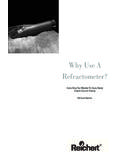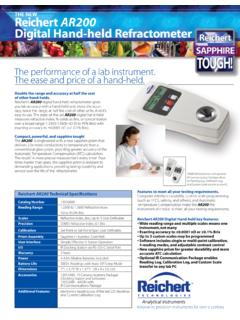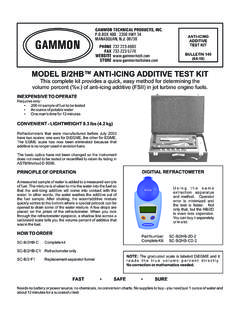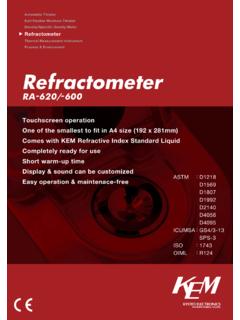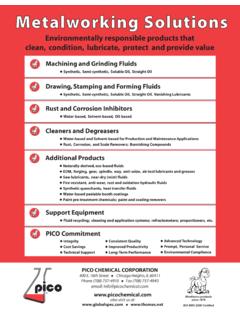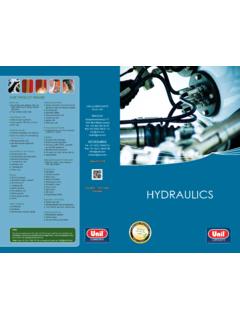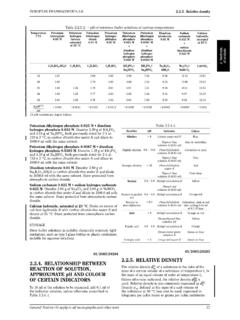Transcription of Measurement of Soluble Solids Content
1 Measurement of Soluble Solids Content D. Garner, Crisosto, P. Wiley, and Crisosto I. Theory A. Sugars are the major Soluble Solids in fruit juice. Other Soluble materials include organic and amino acids, Soluble pectins, etc. Soluble Solids concentration (SSC%, oBrix) can be determined in a small sample of fruit juice using a hand held refractometer. This instrument measures the refractive index, which indicates how much a light beam is "bent" when it passes through the fruit juice. B. Temperature of the juice is a very important factor in the accuracy of reading. All materials expand when heated and become less dense. For a sugar solution, the change is about sugar for every 10oF.
2 Good quality refractometers have a temperature compensation capability. II. Materials A. 0-32% Brix temperature compensating refractometer, distilled water, Kimwipes, 5 or 10% sugar solution. III. Procedure A. Extract clear juice from fruit to be sampled. 1. Sugar levels often vary within the fruit, being higher at the stem-end and lower at the calyx-end. For this reason, it is important to use longitudinal slices of fruit (from end to end) when sampling. B. Place a drop of juice on refractometer prism. C. Lower cover plate and read. 2. In juice samples with a high starch Content , like unripe kiwi, it may be difficult to read the refractometer because the starch settles out on the prism.
3 To remedy this, put your thumb on the cover plate, turn the refractometer upside down, and re-read. This way the starch settles out on the cover plate and does not blur the reading. A. Rinse prism between samples with distilled water and dry with a soft, lint-free tissue (Kimwipe). IV. Refractometer maintenance and calibration A. Clean the instrument after each use with distilled water. Dry with a soft tissue (Kimwipe). B. Calibrate with a drop of distilled water. Adjust reading to 0 oBrix if necessary with the small set-screw on the back. Verify accuracy with a drop of 5 or 10% sucrose solution (5 grams sugar in 100 mls of distilled water).
4 C. Do not submerge the refractometer when cleaning. If water gets into the instrument it will need to be sent out for repair and resealing.
